Dnyaneshwari The Philosophical Part – 6 by V. V. Shairvarkar
Article By V. V. Shairvarkar
Meditation
Yogi Not Different From Sanyasi
Shri Krishna further said, “Yogi (Karmayogi) and sanyasi are both same. You may think they are different but on careful thinking carefully you will find that they are same. Except for the differences in names it is clear that yoga is the same as sanyas and from the spiritual point of view there is no difference at all between the two. (6:39-40). It is an accepted principle that he who performs actions but does not get attached to the fruits thereof, should only be considered as a yogi. (6:43). He who performs whichever actions appropriate to his caste and circumstances, but does not maintain the ego about his being the doer and does not permit the desire of the fruits to touch his mind is a sanyasi and doubtless is a yogi also. (6:45-47).
On the other hand, he who, forsakes the regular routine duties and incidental duties (like offering to forefathers etc.) considering them to be restrictive and instead immediately gets himself involved in other actions, gets himself into unnecessary problems. Why should one give up the burden of family life only to burden oneself with the life of a renunciate? Therefore, one who remains within the prescribed code of actions by doing daily fire rituals etc. enjoys automatically the yogic bliss. (6:48-51).
Shastras have stated that Sanyasi is a yogi because it is only when the desire goes that the essence of yoga is obtained. (6:52-53).
Yogi Should Not Abandon Actions
One who follows the yoga path should not give up the path of actions. By assuming proper posture and breath-control, by steadying the intellect, controlling the organs and keeping them away from the sense-pleasures, he should turn the consciousness inwards and meditate by continued abstraction of mind (Dharana). This will lead to elimination of the tendencies towards materialistic actions. Then the means (sadhana) becomes one with the goal and one becomes steady in he state of samadhi. By practising thus the yogi reaches perfection. Now listen to the characteristics of such a perfect person. (6:54- 61)
A perfect person: Sense objects do not enter his mind and he is engrossed in the Knowledge of the Self. He is not excited by the pleasures and sorrows in the world nor is he enticed by pleasures. Even if he has to perform actions he does not care about the fruits thereof. His actions are just sufficient for the survival of the body otherwise he is oblivious to other actions. Such a person may be considered as settled in yoga. (6:62-65)
Arjuna’s Query
Arjuna then asked (not in the Gita), “Who gives him this capability?” (6:66).
The Harmful Ego
Shri Krishna said, “In this state of oneness who can give what and to whom? (6:67).
It is due to ignorance that a person dreams of life and death. But when he wakes up he realises that the dreams were unreal and becomes aware of the truth that he himself is the Brahman. We harm ourselves by the unnecessary I-am-the-body ego. (6:68-70).
Thoughtfully, one should give up this ego and be benefited by becoming one with Brahman. Really speaking, by being infatuated with the body, one becomes one’s own enemy. (6:71-72). An individual himself is Brahman but his intellect does not believe it. (6:75). A person who nurtures desire becomes his own enemy. On the other hand, he who does not bother about these bindings is the real knower of the Self. (6:80).
For a person who has conquered his mind and calmed his desires the Supreme Self is not very far. When wishful thoughts disappear from the mind the soul becomes Brahman. (6:81-82). When the false ego vanishes completely he becomes one with the Brahman already present within him. The thoughts of hot and cold, happiness and sorrow, honour and insult are not possible in such a person. Just as whatever comes in the path of the sun gets illuminated, whoever comes in the path of such a perfect person becomes like him. The thoughts that these deeds are good and those are bad do not enter his mind because he has become one with the Brahman and is devoid of duality. When he ponders over the nature of this world he finds that it is unreal and when he searches for the reality he experiences that that reality is himself. When he later tries to determine whether he is bound by space and time or by the all-pervading, all his efforts stop because now his feeling of duality with Brahman vanishes. One who has conquered his senses while remaining in his body has automatically reached the level of Brahman. Such a person should be called a yogi and the master of his senses. The differences like big and small do not enter his mind and a lump of earth, a precious stone or gold are the same to him. (6:84-92). Then how can the ideas about friend and foe, relative or a stranger come to his mind? (6:94). Everything in this world appears as Brahman to him. One who has experienced that this world is pervaded by Brahman is a person with vision of equability towards everything. (6:100-101). Even thoughts about such a person coming to one’s mind make him become like that person. (6:104). But there is no limit to the praise of such a person. (6:111)
ARJUNA ASKS FOR ADVICE
Arjuna then expressed his desire that though he does not have the qualities of saints in him and perhaps he is not yet fit to understand the importance of these characteristics, Shri Krishna’s advice might make him fit to become one with Brahman. (6:138-140). Shri Krishna, realising that this is the opportune time to tell him about the practice of Yoga, told Arjuna, (6:151).
Advice On Kundalini Yoga
“What I am going to tell you now is about that Yoga path which is the king among all yoga paths, therefore listen carefully. By this path one gains innumerable fruits of detachment through deliberate actions. Lord Shiva is even now a follower of this path. Some Yogis tried other ways to attain Brahman but getting wiser by their experience they had to turn to this straight path of Self-realisation after which they made rapid progress. A person who has discovered this path forgets his hunger and thirst and is not aware about when the day comes or when the night falls. Every step in this path opens towards the mine of liberation. Whether you go eastward or westward the progress on this path occurs quietly and definitely. (6:152-159). Now I shall tell you the details; but they are useful only if you experience them. (6:163).
Selection of location: First of all a suitable place should be selected for the practice. One should get a feeling of happiness on sitting there and a feeling that he should not leave the place. One’s sense of dispassion should increase while sitting there. Saints should have occupied that place earlier, the effects of which are still felt by getting a feeling of satisfaction, courage and zeal. The practice of yoga should occur naturally by sitting there and the beauty of the surroundings should give one the experience of the bliss of the Self. Even an atheist should feel like doing tapas there. (6:163-167)
That place should be beautiful and pure. It should be inhabited only by seekers and be away from the crowds of ordinary people. Plenty of roots and fruit-laden trees should be available throughout the year and water, especially from natural fountains, should be available even in dry season. It should enjoy mild sun and cool breeze. It should be so thickly wooded that not only wild animals but even bees and parrots cannot enter. But there may be a few water birds around and perhaps a cuckoo and occasional peacock may also be there. Arjuna, one should carefully search for such a place looking for a secret cave or a temple of Lord Shiva. (6:171-179).
Preparation of the seat: After selecting one of the two places (cave or temple), one should sit there alone for a long time and check whether or not the mind becomes calm. If it becomes calm then one should prepare a seat there. The seat should be made of Darbha grass over which one should put a deerskin and cover it further by a clean washed cloth. The seat should be level and not too high or too low from the ground. If the seat is too high it will make the body unstable and if too low then the body will touch the ground. In short the seat should be steady and comfortable. (6: 180-185).
Stabilising the mind: Then one should sit there concentrating the mind while remembering one’s Guru. The Guru must be remembered until the mind is filled with Sattvic (pure) feelings so that one’s ego gets blunted, mind is rid of thoughts of sense-objects and the organs do not stir. One should remain in this state until one experiences that the mind has merged with the heart. In this state one experiences that body automatically becomes steady and airs in the body are coming together. After remaining in this state the mind stabilises, interest in worldly affairs gets inhibited and he attains the state of deep trance (samadhi) effortlessly as soon as he sits on the seat. (6: 186-191).
Yogic posture and Chakras: Now listen carefully to the details about the yogic posture. First sit with the calves of the legs pressed against the thighs and keeping the left leg on the other leg at a slight angle, press the right sole steadily on the anus, keeping the sole of the left foot naturally pressed on the right foot. Pressing the heel tightly at the centre of the space between the anus and the base of the generating organ, one should balance the body on it. Keeping the two ankles straight he should lift the base of the spinal column. This will make the whole body to be supported and balanced on the heel. This is the characteristic of the Mula Bandha posture (the knot at the root or base) also known as Vajrasana. Once this posture is successful then the downward path of the Apana part of the vital breath (or life force) gets blocked and it starts receding inside. (6:192-200). (See the note regarding Prana at the end of the chapter).
Then let both palms held in cupped shape rest on the left leg, which will make the shoulders rise. The head automatically gets in between them. The eyes then remain in half-closed state and the sight turns inwards. Even if it turns outwards it can look only up to the tip of the nose. The desire to look around vanishes. Then the neck gets contracted and the chin presses against the chest hiding the throat. This posture of the neck and chest is called the Jalandhar Bandha or knot. (6:201-208).
Then the belly becomes flat and the navel gets raised. The posture of the part of the body between the navel and the anus is called Odhiyana Bandha or knot. (6:209-210).
Thus the Yoga practice starts with the external parts of the body while the thoughts, desires and other affairs of the mind vanish. He is not aware anymore of hunger and sleep. (6:211-213).
Awakening of Kundalini: The Apana breath then hits the Muladhar Chakra situated at between the anus and the generating organ and removes all the impurities accumulated there since childhood. (See the note on the Chakras at the end of chapter). Then the Apana breath rises to the Manipur Chakra situated just below the navel and starts hitting against it. Thus the confined breath stirs the body from inside and removes the impurities accumulated since childhood. Then the powerful breath enters the abdomen and eliminates the phlegm and bile. Then it reaches the centres of the seven essential elements (viz. flesh, blood, muscles, bones, marrow, chyle and semen), gets rid of the fat, and drives the marrow out from the bones. It cleans the blood vessels and relaxes the organs, which may frighten the seeker, but he should not get frightened. By creating these ailments it throws the diseases out from the body. Then the Apana breath brings the solid flesh and bones and the liquid blood together. (6:214-220).
While this goes on the Kundalini force awakens by virtue of the heat created by the yogic posture. It was sleeping like a baby cobra coiled in three and half coils near the navel with its mouth facing down, (6:221-223) but now gets awakened due to the constriction by the Mula Bandha. (6:225).
Kundalini reaches other Chakras and purifies the body: When it wakes up it opens its mouth and swallows the Apana which has occupied the space in the region of the heart. It then swallows the fat and excess flesh from the region of the heart and wherever else it can find flesh. (6:229-231). Then it searches for the palms and soles, tears open the upper parts and searches every joint and organ. It extracts the vitality from the nails, purifies the skin and makes it touch the bones. Then it cleans the insides of the bones and scrapes the interior of the blood vessels with the result that the roots of the hair are burnt. It then drinks off the seven essential elements and makes the body hot and dry. (6:232-235).
It then draws back the Prana coming out of the nose and the Apana which is inside and when they meet only the curtains of the six Chakras separate them. They would have met except that Kundalini asks them, “What business do you have here? Get aside!” The principle is that the Kundalini eats off the Earth principle (solid part) and also completely licks off the Water principle (liquid part) from the body and feeling satiated becomes mild and rests at the Sushumna (central) nerve in the spine. (6:236-240). In this satisfied mood it vomits the saliva, which becomes the nectar, which guards the body. At this stage the heat leaves the body, which now becomes cool from inside as well as from outside because of which the lost strength returns. The flow in the Sushumna nerve stops and the functions of the remaining nine Pranas also stop. Because of this the body is without action and becomes still. The Ida and Pingala nerves in the spine meet and the three knots get loosened and the curtains of the six Chakras open. Then the vital airs passing through the right and left nostrils (which are designated Sun and Moon respectively) fade to the extent that even a flame will not flicker by them. (6:241-245). At this time, the intellect gets stilled and the remaining fragrance in the Prana enters the Sushumna nerve along with the Kundalini. Then the spiritual nectar (Ambrosia or Amrit) situated at the crown of the head spills into the mouth of the Kundalini and then gets absorbed throughout the body including the ten Pranas. (6:246-248).
Body gets rejuvenated: The skin, which veils the lustre of this nectar but is brightened by it, is shed and all the organs show their bright aura. (6:250, 252-253). Now even Death is afraid of it (the body) and the aging process gets reversed. The yogi gets back his lost childhood and he looks like a boy. (6:259-261). He gets bright new nails. He gets new teeth also but they are tiny like a row of pearls. Tiny hairs grow on the body. The palms and soles become red and the eyes become so clean that his vision cannot get confined within the eyelids and even with half-closed eyes the range of his vision reaches the sky. (6:262, 265-267). Though the colour of his skin becomes golden, his body becomes light as air because now there are no earth and water principles in it. He is able to see beyond the seas and understand what is going on in heaven. He is able to understand what is in an ant’s mind and he can ride the wind. Even if he walks on water his feet do not get wet. Thus he attains such spiritual powers (Siddhis). (6:268-270).
Divine experiences: Now listen to what happens further. The Kundalini, with the help of Prana rises up to the heart through the Sushumna nerve. (6:271). This Kundalini now may be considered as the basis of this universe and of AUM, which is the expression of Supreme Soul. (6:272-273). The yogi then starts hearing the divine Anahat sound. (6:274). The intellect, which is near the Kundalini power, becomes active and is now able to hear some of this Anahat sound. (6:275). There are ten types of Anahat sound and he hears the first type of sound called Ghosha and in this basin of Ghosha itself sound pictures are then generated which one sees through one’s imagination but when the person is not himself where is the imagination? Actually it is impossible to explain where the sound is coming from. (6:276-277). I forgot to tell you one thing that is the Anahat sound reverberations near the heart persist as long as Air principle is not destroyed. The reverberations in the Sky principle (space) open the window of the Brahmarandhra (Sahasrar) easily. There is another space above the Sahasrar (lotus of thousand petals) where the Consciousness (Chaitanya) resides without support. (6:278-280). There the Kundalini flashes its energy and by giving an offering of it to the intellect it makes the duality disappear. Now the Kundalini drops its brilliance and merges with the Prana. At that time it looks like a golden robe shed by a statue of air or like a tongue of lightening. (6:281-284). Thus, when it reaches up to the Sahasrar, it looks like a golden chain or a stream of shining water. Then it suddenly vanishes in the space of the spiritual heart and its power dissolves into itself. We should really call it power but it is really the life-force which is no longer aware now of any material aspect of the world. (See notes at the end of Chapter.) In these state things like conquering the mind, holding the breath or meditating do not remain. Having desires or giving them up also stop. Therefore this Kundalini may be considered as the melting pot of all the five principles. (6:286-290). Dnyaneshwar Maharaj says, “Using the body itself to devour the ego about the body is the principle of the Nath Panth (sect). Shri Krishna has merely mentioned it in the Gita, but I have put the details before the audience.” (6:291-292).
Siddhis: When the lustre of the power vanishes, the appearance of the body also changes and eyes of common people cannot see the real form of the yogi. Actually the gross body continues to possess the limbs and other organs but it is now made of air principle. (6:293-294). His body can become so light that he is called Khechar i.e. one who can travel through space. Once he reaches this stage his body performs miracles because now he has gained Siddhis. (6:296). One need not go into the details about these Siddhis, main point being that the three principles Earth, Water and Fire have disappeared from within his body. Of the five principles, Water principle has destroyed the Earth principle and Air principle has destroyed the Water principle while in the spiritual heart, the Air principle has destroyed the Fire principle. What remains is the Air principle in the shape of the body. But after some time that too vanishes in the space of the spiritual heart. At this time the Kundalini changes its name to Marut i.e. wind or air. But until it merges into Brahman its form as power persists. (6:297-301).
Then it breaks the Jalandhar knot and surges through the throat to the Brahmarandhra. With the help of recitation of the basic sound AUM, it rises to the Pashyanti stage of the sound and enters the Brahmarandhra up to the half of Tanmatra. By steadying itself in the Brahmarandhra, it embraces the Brahman. The curtain of the five principles is withdrawn and the power meets the Supreme Brahman and evaporates into it along with the Sky principle. (6:302-306). (See the note at the end of the chapter).
Thus the soul, which was separated from the Brahman by virtue of acquiring the body, enters the Brahman. At that time thoughts about whether the soul is different from me (that is the Brahman) does not survive in the mind. (6:307-309). The person now experiences merging of what is described as Sky principle with the sky. This cannot be described in words but has only to be experienced. (6:310-311). Arjuna, understand that this phenomenon is not something explicit which can be understood by listening to words. There is nothing more left for him to know. I can only say that if one is fortunate then one should experience it and be one with the Brahman. (6:316-318). But it is meaningless to talk about it. That (the Brahman) is the root of the universe, the fruit of the yoga, and the energy of the bliss. That is where the forms dissolve. It is the place of liberation and beginning and end disappear there. It is the seed of the five principles and brightness of the Great Effulgence. When the non-believers tortured my devotees, I had to assume my beautiful four-armed form out of it (the Brahman). The great bliss of this state is beyond description. Persons who have realised Self by steadily striving for it have become pure and reached my status. (6:321-326).
Arjuna’s Doubt
Arjuna now gets a doubt whether he is fit for practising this yoga. He asks,
“Shri Krishna, I am convinced about the excellence of this yoga practice. But I am not worthy enough to practice it. What I want to ask you is whether anybody would be able to practice it or whether it requires one to be qualified to practice it.” (6:333-337).
Worthiness For Yoga Practice
Shri Krishna replied. “This yoga is a means to liberation. Even an ordinary task cannot be successful unless the doer is worthy and capable of doing it. But the worthiness can be only judged if and when the task is successful. If there is worthiness then only a task that is begun becomes successful. But capability is not something one can easily acquire. When a person, by becoming detached performs the prescribed actions then he attains authority. You can use this trick to attain worthiness. (6:339-343).
Arjuna, one rule of the yoga practice is that he who does not perform prescribed actions does not become worthy. (6:344). One who is a slave to the pleasures of the tongue and of sleep does not have the right to practice yoga. Also, one who, out of obstinacy, reduces his diet by suppressing his hunger and thirst and does not sleep properly cannot control his body. How can such a person succeed in yoga? Therefore one should not pamper the sense-pleasures but at the same time one should not totally abandon them also. (6:344-348). One should eat but it should be proper and in moderation. One should undertake only a limited number of tasks. One should talk only what is necessary, walk within limits and sleep at proper times only. (6:350). Even if one has to stay awake for any reason, it should not be beyond some specific limit. By such regular routine the essential constituents of the body remain in balance. And when the senses are satisfied in proper proportions the mind also remains satisfied. (6:351-352). Once the external organs become regulated the internal happiness increases and the yoga is achieved even without practice. (6:353). One who practices yoga by remaining regular and controlled in his habits experiences the Self. (6:355). A person whose mind becomes steady and remains so until death, may be called a person who has achieved yoga. In this stage his mind may be compared to a flame in windless air. (6:357-358).
Gains From Yoga Practice
A beneficial thing often appears as painful to a person. Otherwise nothing is easier than the practice of Yoga. (6:363). Only with the practice of yoga, by sitting steadily in the posture as I described, can the sense-organs be disciplined. Once that is achieved the mind automatically sets itself towards the Soul. When it returns from there and looks back at the Self it realises that “I have been That” all the time. Then it is immersed in bliss and dissolves in the Self. It becomes one with That (Self or the Brahman) beyond which there is nothing else and which can never be realised through the senses. (6:364-368). In this state, his mind remains steady and his awareness about the body vanishes even if it is afflicted by severe pains. (6:369-371) Because of this indescribable bliss he forgets other things also. Because of the pleasure of the experience of the Self the mind forgets the desires and is no longer mindful of the worldly matters. The bliss which adorns the yoga, and which gives satisfaction and knowledge appears in form by the study of the yoga and the person who sees (experiences) it becomes of that form. (6:372-374).
Attitudes For Starting Yoga Practice
Arjuna, you may feel that this yoga is difficult, but in a way it is very easy. First one should get rid of desire and anger, which arise out of thoughts in the mind. (6:375) Once the sense pleasures are eliminated and organs are controlled, the mind becomes calm. Thus, once dispassion sets in then desires do not enter the mind and the intellect is sheltered by courage. The intellect, once it is helped by the courage, turns the mind towards Self-realisation. (6:375-378).
Even if this does not happen there is another easy way towards Self-realisation. First one should make a rule that a resolution once it is made will not be changed. (6:379-380). If this makes the mind steady then well and good. But if it does not, then let the mind wander freely. Then bring it back from wherever it has wandered. It will then be steady by itself. Once the mind is able to remain steady for some considerable time it will by itself come towards the Self and when it sees the Self it will become one with it. The duality will then merge into unification with the Self and the bright light of the union will illuminate the three worlds. (6:381-384). Everything becomes full of divine energy once the mind dissolves. (6:386).
If you are not able to do even this then listen further. (6:390) One should fix the thought in one’s mind that “I am in the body of every being and everything is in Me; that this universe and all living beings are interlinked.” (6:391-392). Needless to say that he who sees my presence in every being with the feeling of equality and does not harbour discrimination in his mind based on outwardly differences between them is undisputedly one with Me. (6:393-394). By not being involved with its affairs he reaches my level through his experiencing of the Brahman even while he is in his body. He who has experienced my all-pervasive nature himself becomes all-pervasive. (6:401-402). I have seen that a person who has experienced Self in the three worlds is himself Brahman by virtue of his experience, even though he goes about normally in his body, with people thinking of him in their own perception as happy or unhappy as the case may be. (6:407-408). Therefore my advice to you Arjuna, is to practice the outlook of equality by which you will see the universe in yourself and be one with it. There is nothing else worth achieving other than this outlook of equality. (6:410).
Arjuna’s Doubt On Nature Of Mind
Arjuna now raises a doubt, “Shri Krishna, the path you have told just now will not sustain because of the nature of the mind. It tortures the intellect and weakens the determination and runs away from courage. It creates desires when one is in a state of satisfaction and wanders everywhere. It bounces if suppressed and assists if controlled. Therefore it does not appear possible that the mind would become steady and impart the sense of equality. (6:414-416).
Directing The Mind
Shri Krishna replied, “What you are saying is true. The mind is mercurial. But if one can turn it towards the practice of yoga observing dispassion, then it will become steady after some time. The mind has one good quality and that is, it develops a liking for a thing towards which gets attracted. Therefore one should make it to like the experience of the Self. (6:418-420).
Those who are not dispassionate and also do not practice yoga would find it impossible to control the mind. But if we do not at all bother about following the techniques of regulated behaviour (Yama–Niyama) and about dispassion, and instead get immersed in sense pleasures and thus do not conquer the mind then how can it become steady? Therefore let your actions be such as to control the mind and then we shall see how it does not become steady. “(6:421-424).
Arjuna’s Doubt: What If Seeker Dies Halfway?
Now Arjuna raises one more doubt. He says, “Shri Krishna, I did not know about this yoga until now therefore I was thinking that mind is uncontrollable. But now, by your grace, I have been introduced to the yoga. But I have one more doubt that only you can settle. (6:428-430). Suppose a person, deeply desirous of attaining liberation, gives up worldly pleasures in good faith but has not been able to fully succeed in his spiritual efforts. If such a person dies before attaining his goal then he will have neither the liberation nor the worldly pleasures. Thus in spite of having faith he has lost both. Please tell me what happens to such a person.” (6:431-432).
Seeker Is Reborn As Yogi
Shri Krishna replied, “Arjuna, can there be anything other than liberation for one who longs for it? He is merely taking rest for some time. And even then, during that rest period, there is such a happiness which even gods do not gain. Had he practised yoga then he would have attained liberation before death. But because of lack of speed he had to stop in the middle. But liberation is reserved for him. (6:437-440). He reaches with ease the planes which even Indra the king of Gods finds it difficult to attain. But he gets sick of the incomparable enjoyments on these planes and says all the time, ‘Oh God! Why are there impediments in my path to liberation?’ Then he returns to the earth to be born in a religious family and starts gaining spiritual wealth. People in such family observe morals, speak clearly and truthfully and behave as prescribed in the Scriptures. (6:441-445). For them the Vedas are the living deity, actions are guided by Swadharma and discrimination, thoughts are only about God and the family deity is their wealth. Thus the person happily is born here on the strength of his meritorious deeds. (6:446-448). Or he is reborn into the family of a yogi of high level. The person even as a child is already loaded with knowledge because of his past. Due to the mature intellect he knows all branches of knowledge easily. (6:451-454). His intellect develops further from the point of his death in the earlier lifetime and he is able to grasp mysterious subjects and even difficult things told by a Guru. (6:457, 459). His sense-organs come under his control, mind becomes one with the Prana the vital life-breath and the Prana dissolves in the Consciousness. Somehow, yoga practice also comes easily to him and he can attain the Samadhi State effortlessly. (6:460-461). He attains Siddhis even while he is an acolyte. (6:464). He is able to do his spiritual exercises effortlessly because he has reached the shores of the Self-realisation after millions of years and after overcoming the impediments of thousands of births. He gets the power of discrimination and putting that also behind in time and going beyond thought he becomes one with the Brahman. (6:465-467). He then gets that indescribable and unfathomable bliss which is beyond words. He becomes the living image of the state of the Brahman, which is the ultimate destination. (6:469-470). He reaches this state while still in his body. (6:480). Consider him as my life-force (Prana). He experiences that he is the devotee, devotion and the deity of devotion all three in one. This union of love between him and Me can be described only as he being the soul in My body. (6:482-485).
Learn Astrology: Join Our Upcoming Astrology Classes — Click Here
Learn Astrology: Join Our Recorded Astrology Classes — Click Here



![Astakvarga & Karma [High Points - High Karma] by Ashish Raj 2 Astakvarga & Karma [High Points – High Karma] By Ashish Raj](https://saptarishisshop.com/wp-content/uploads/2023/01/Astakvarga-Karma-High-Points-–-High-Karma-By-Ashish-Raj-100x100.png)
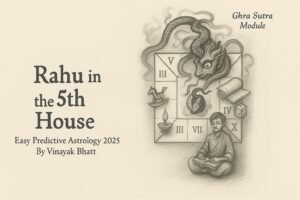

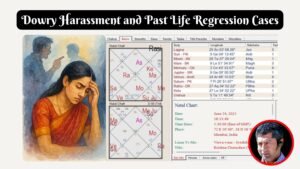
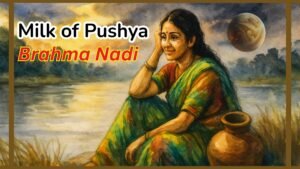

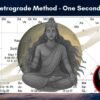
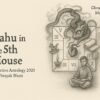

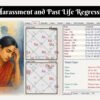
Leave a reply
You must be logged in to post a comment.